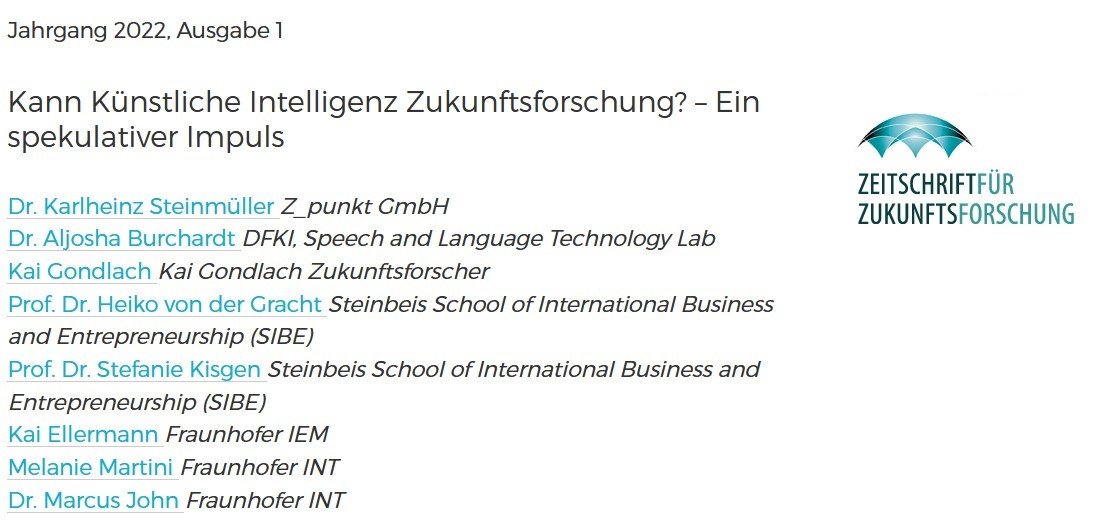The old vision of precise, objective, reliable predictions, issued by a kind of supercomputer, has gained new foothold by progress in the field of artificial intelligence (AI). But what can realistically be expected from the use of AI in futures studies? In 2021, the Netzwerk Zukunftsforschung organized a workshop on this topic; recently the Zeitschrift für Zukunftsforschung published a discussion on it (see here – in German language). For the time being, the use of AI in foresight is restricted to certain kinds of horizon scanning and data analysis. But in the long run? Three scenarios can be distinguished:
- Incremental progress: use of (weak) AI for specific tasks
- Human-AI-teams: Cooperation of researchers with AI systems that take the role of powerful software assistants.
- True AI Oracles: An electronic Pythia makes predictions and recommendations on the basis of information items and procedures that are beyond human grasp. The third scenario presupposes general artificial intelligence, now much discussed and – as I see it – hyped. Whether AI can overcome its deeply rooted restrictions (without being embodied and situated it has no access to common sense …) is at best open. Nevertheless, one may assume that future clients or research audiences will demand heavy use of AI. In this case, the functions AI tools can perform are not really relevant, but what the research audience believes that AI is capable.

